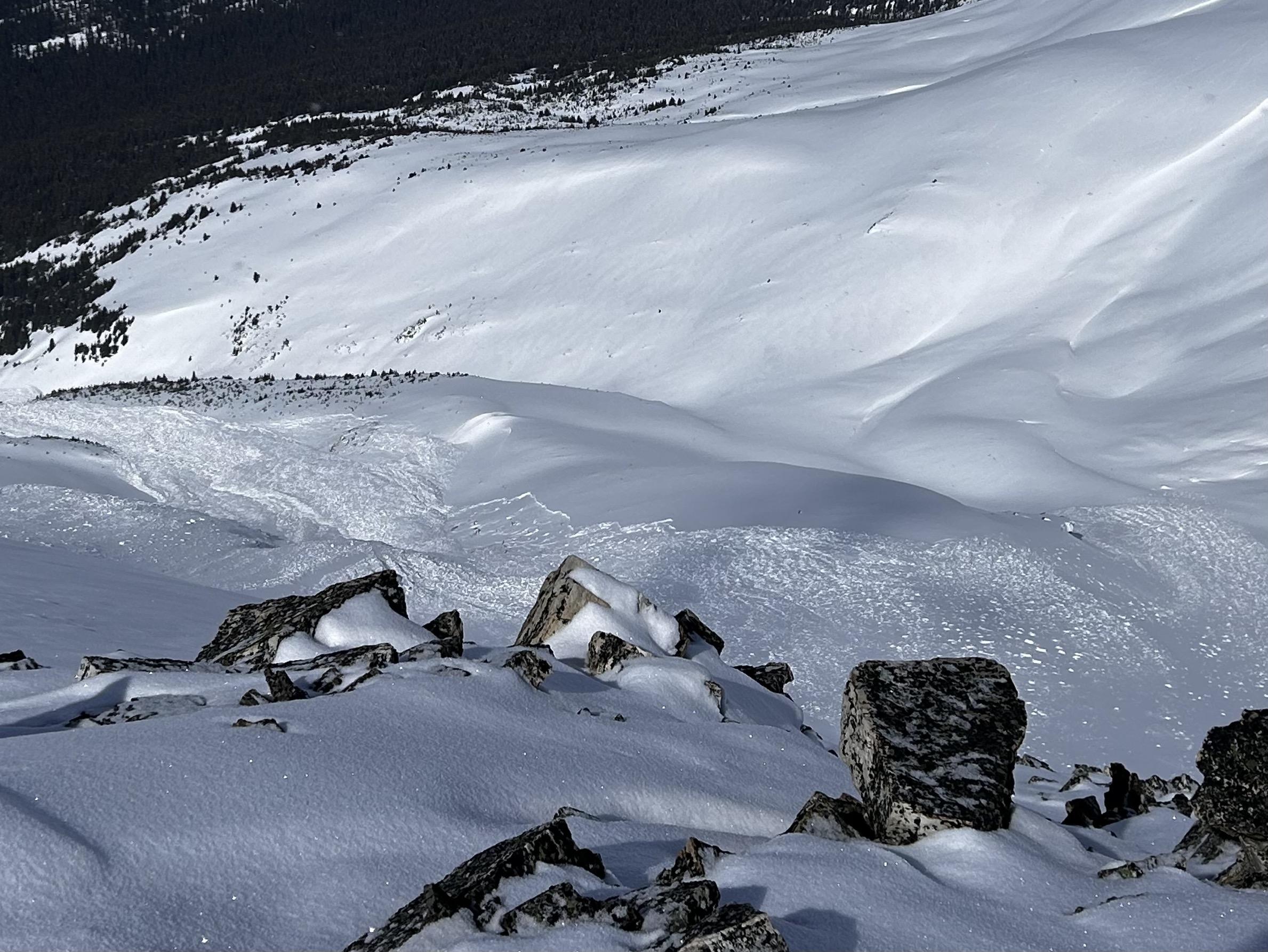We have been skiing in Banff National Park the past week: Dolomite Traverse, Little Crowfoot, Observation Sub Peak north glacier, and Crowfoot Trees.
Something you may notice from the objectives listed above is that they are are all pretty mellow terrain. We have been purposely choosing terrain that carries less risk, even though we would often be hitting bigger, steeper, more committing objectives at this time of the season.
It sounds like a broken record but our investigations of the snowpack still reveal significant weaknesses. The main concerns are the deep persistent layer of basal facets, and the storm slab atop melt-freeze crusts from late March/early April (which at this point is approaching persistent slab status). For the most part spring crusts are not strong enough to overcome these weaknesses deeper in the snowpack.
April is when ski touring in the Rockies really shines. So much easily accessible terrain, so many big lines, and often a pretty stable snowpack. Unfortunately, this year, although it may feel like spring with warm days and cold nights, we do not yet have a spring snowpack.
Although it is not normal to be dealing with these issues in late April, it is not that abnormal either. If you have been skiing in the Rockies for more than half a dozen years you will probably have experienced similar spring conditions. Effective decision-making for any backcountry activity is largely experience-based, and that experience takes years if not decades to build.
Luckily, in Canada, we all have access to decades of experience with our public avalanche forecasting system. The trick is to listen to the messaging even if it is not what we want to hear. I know that when I've been clicking into my skis in the past week with the sun on my face and a load of fantastic terrain ahead I really want it to be good out there so I can relax and ski the lines I dream about all winter. But even though I've been doing this for several decades I still listen to my peers and am throttling down my desires.
Even if you don't want to listen to the greybeards, there is plenty of factual evidence out there saying winter avalanche problems remain: look at the MINs (a few close calls the past few days), look at the snowpack. Just because it is April doesn't mean facets aren't going to act like facets.
Attached is a photo looking down on a large avalanche (size 3) on Observation Peak. It failed on the deep persistent layer, probably during the big avalanche cycle almost 2 weeks ago. This is similar terrain and snowpack to the terrible accident which occurred yesterday near Lake Louise. This layer has not gone away, and the late March/early April crust problem is not going away either. For both of these problems the first "sign of instability" you may notice is when the slope is avalanching all around you. The same warm, sunny weather that makes us relax and think all is good in the world is a big part of the problem right now as it is also helping cause the instability.
I hope it doesn't sound like I'm preaching. I just hate to drive past a ski run I've had many memorable turns in and see an avalanche where I know some skiers and a lot of rescuers had a life-altering experience in.
"Courage and strength are nought without prudence, and a momentary negligence may destroy the happiness of a lifetime." - Edward Whymper

